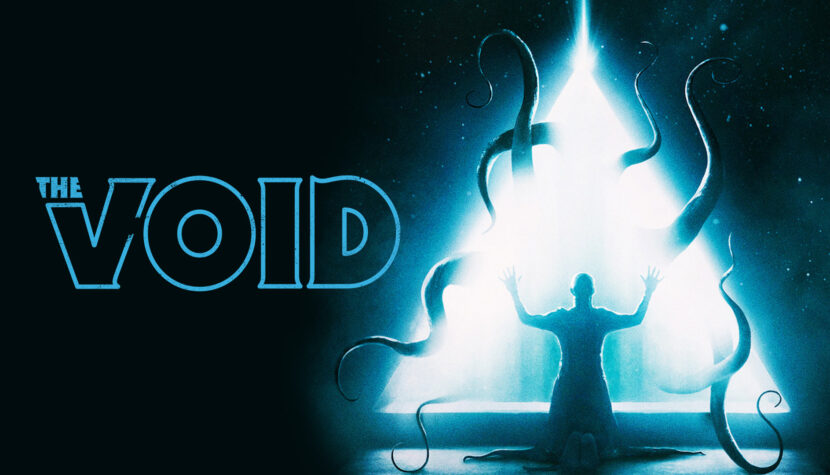THE VOID. Solid, Carpenter-inspired horror movie

…, but The Void is not a hermetic film intended only for a narrow circle of VHS enthusiasts. It’s a horror movie that all genre enthusiasts should appreciate.
The plot… is there. Nothing extraordinary, but at the same time, nothing so clichéd that your only reaction to the next murder would be to contemplate, “What should we have for dinner?”. In The Void, however, the most important elements are the atmosphere and special effects. The latter may make you skeptical, as low-budget horror films have been plagued by digital nightmares for years, making the infamous deer from The Walking Dead (or the equally infamous deer from the American The Ring 2 – poor creature, it has no luck with filmmakers) look like it was plucked straight out of Avatar. The Canadian directing duo was aware of this, and their film can be seen as a protest against prevailing practices.

For the record, CGI is not inherently evil and has many sublime moments in the history of cinema (such as the live-action adaptation of Ghost in the Shell), but if it’s not of a very high standard, it immediately stands out and ruins the viewing experience. Examples? I Am Legend – one of the better mainstream horror films of the 21st century, where the terrible CGI zombie-like creatures effectively destroy the atmosphere built up over half an hour. Watchmen – one of the best comic book adaptations, where Bubastis (the mutated lynx) looks so embarrassingly bad that you almost want to turn it into a deer. On the other hand, unsuccessful practical effects? The cockroach juice? Schwarzenegger’s face in the first Terminator? Freddy Krueger from A Nightmare on Elm Street? Each of them has a unique charm that still captivates after all these years.

The creators of The Void are well aware of all the pros and cons of practical and computer-generated reality conjurers, as working with them is part of their daily routine. They both contributed to the visual design of Suicide Squad, which can be criticized for many things, but it’s undeniable that it looks great. They are also working on a new version of It, which looks great in the trailers. However, it turned out ironically that today, effects that were considered cheap a quarter of a century ago are the most expensive, so the duo decided to organize an unconventional crowdfunding campaign. Within the campaign, they were raising funds not for the entire film but specifically for generating the desired visual experiences.

Jeremy Gillespie and Steven Kostanski, in the campaign description, mentioned John Carpenter’s The Thing, which was prepared for eleven months before the actual shooting began. According to current standards, no major studio would agree to such a long production time, and no small studio could afford it. However, the directors of The Void managed to pull it off and raised a whopping eighty-five thousand dollars (158% of their goal), which would be enough for five Troma studio films. The 1986 version of The Fly, the 1988 version of The Blob, H.R. Giger, and Masahiro Ito – these are the main sources of inspiration. On-screen, the fascination with the work of the latter is particularly evident – the first monster encountered by the characters looks like a lost inhabitant of Silent Hill (of which Ito was a co-creator), and the character dragging an axe immediately evokes associations with Pyramid Head.

Special effects are what make The Void exceptional, but this doesn’t mean that the story is of low quality. Women giving birth to demons are indeed a theme so often used in horror that it could be considered a separate genre, and the screenplay lacks surprise elements. However, the story is skillfully executed and engages the audience from the first minute. The straightforward plot benefits from a great, claustrophobic atmosphere, reminiscent of John Carpenter’s works such as The Thing, Assault on Precinct 13, Prince of Darkness, Dark Star, and In the Mouth of Madness. In fact, the theme of isolating a larger or smaller group of people from the outside world appears in almost all of his films. Today, John Carpenter is primarily known as a musician, and his unique sound (created out of budgetary necessity rather than artistic ambition) is more frequently imitated than ever before. In this regard, The Void breaks away from the trend and, instead of beats generated by archaic Casio keyboards, offers the work of a living legend of dark ambient music – Lustmord.

Comparing The Void to most contemporary mainstream horror films, it stands out in terms of execution quality and the absence of extremely improbable or mindless plot elements. However, when you compare the special effects by the Gillespie/Kostanski duo to what Rob Bottin was able to conjure in the 1980s and the script with the unrestrained madness of creators of Brain or Revenge of the Embryo, the result is, at best, average. The Void primarily defends itself as a product of its time, and while it will most likely fade into the annals of history, it’s worth spending one lazy evening on.

